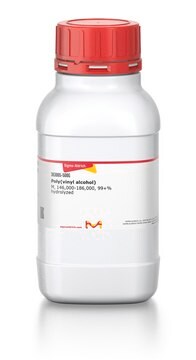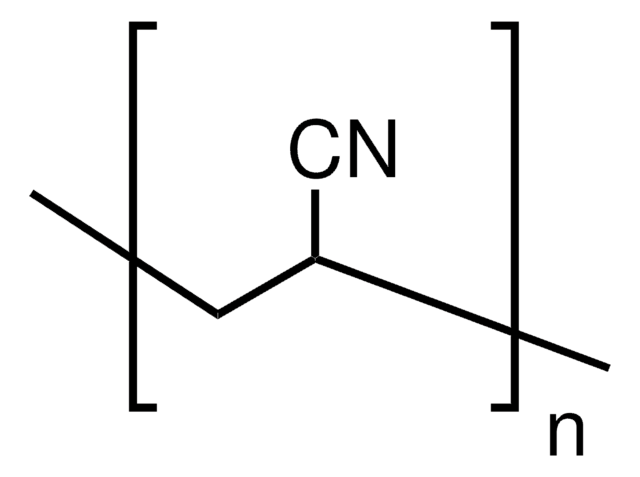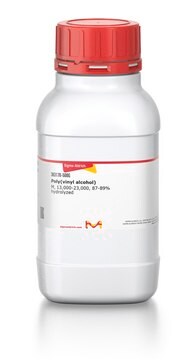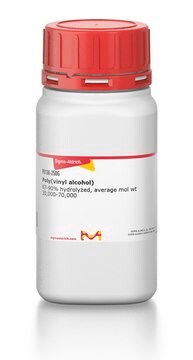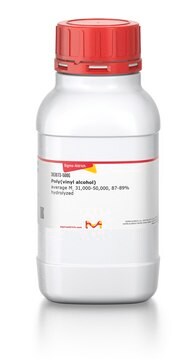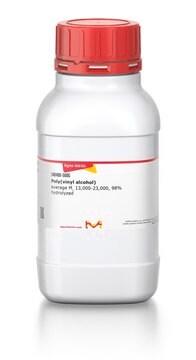363103
Poly(vinyl alcohol)
average Mw 146,000-186,000, 87-89% hydrolyzed
Synonym(s):
PVA
Sign Into View Organizational & Contract Pricing
All Photos(2)
About This Item
Linear Formula:
[-CH2CHOH-]n
CAS Number:
MDL number:
UNSPSC Code:
12352104
NACRES:
NA.23
Recommended Products
Quality Level
form
powder or crystals
mol wt
average Mw 146,000-186,000
falling ball
40-50 cP, 4 % in H2O(20 °C)(lit.)
InChI
1S/C2H4O/c1-2-3/h2-3H,1H2
InChI key
IMROMDMJAWUWLK-UHFFFAOYSA-N
Looking for similar products? Visit Product Comparison Guide
General description
Poly(vinyl alcohol) (PVA) is a vinyl based water soluble polymer that can be used as a non-ionic surface active agent. It can also be used as a biodegradable polymer and can be incorporated in adhesives, coatings, textiles, ceramics and cosmetics. Its properties include good transparency, chemical resistance, toughness and anti-electrostatic properties.
Application
PVA can be used in the preparation of hydrogel templates for drug delivery applications. It can also be used in the development of organic memory systems.
Storage Class Code
11 - Combustible Solids
WGK
WGK 1
Flash Point(F)
No data available
Flash Point(C)
No data available
Personal Protective Equipment
dust mask type N95 (US), Eyeshields, Gloves
Choose from one of the most recent versions:
Already Own This Product?
Find documentation for the products that you have recently purchased in the Document Library.
Customers Also Viewed
Coexistence of Write Once Read Many Memory and Memristor in blend of Poly (3, 4-ethylenedioxythiophene): polystyrene sulfonate and Polyvinyl Alcohol
Nguyen VC and Lee PS
Scientific Reports, 6(1-2), 38816-38816 (2016)
Compostable Polymer Properties and Packaging Applications
Plastic Films in Food Packaging, 217-248 (2013)
Biodegradation of poly (vinyl alcohol) based materials
Chiellini E, et al.
Progress in Polymer Science, 28(6), 963-1014 (2003)
Gang Wang et al.
PloS one, 6(11), e27605-e27605 (2011-11-24)
Mucosal vaccination has been demonstrated to be an effective means of eliciting protective immunity against aerosol infections of foot and mouth disease virus (FMDV) and various approaches have been used to improve mucosal response to this pathogen. In this study
Miao Zhang et al.
Journal of visualized experiments : JoVE, (73)(73), e4335-e4335 (2013-03-15)
Existing protocols for the generation of neurons from human pluripotent stem cells (hPSCs) are often tedious in that they are multistep procedures involving the isolation and expansion of neural precursor cells, prior to terminal differentiation. In comparison to these time-consuming
Our team of scientists has experience in all areas of research including Life Science, Material Science, Chemical Synthesis, Chromatography, Analytical and many others.
Contact Technical Service
